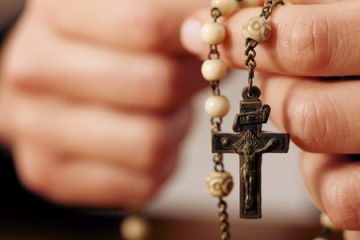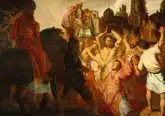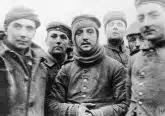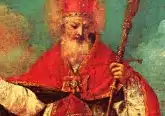Why is St. Luke the patron saint of butchers? Here’s a clue
St. Louis, Mo., Oct 17, 2022 / 17:00 pm
The Catholic Church celebrates the feast day of St. Luke the Evangelist on Oct. 18.
Luke, who wrote the Acts of the Apostles as well as the Gospel that bears his name, likely incorporated the Blessed Virgin Mary’s testimony into his writings. He traveled throughout the Mediterranean region with St. Paul, serving as Paul’s personal physician. He is the patron saint of many things, including physicians, surgeons… and butchers.
Why is Luke associated with butchers? An image commonly ascribed to him offers a clue — a winged ox.
Each of the four Gospel writers — Matthew, Mark, Luke, and John — has a special image associated with him. Matthew’s is a divine man; Mark’s a winged lion; and John’s an eagle.
A 2013 article by Dominican Father Bonaventure Chapman notes that the first ascription of animal symbols to the four evangelists seems to come from St. Ireneaus in his work “Against Heresies.” There, Ireneaus notes that Luke’s Gospel commences with Zacharias the priest offering a sacrifice to God — oxen were associated with temple sacrifices in Judaism — and also features the parable of the prodigal son, in which a fatted calf is slaughtered after the title son returns.
The ox, or calf, signifies the priestly and sacrificial character of Christ in St. Luke’s account, Chapman wrote. But there may also be a different reason for Luke’s association with oxen, he said.
Oxen are also strongly associated with yokes, and work in teams of two — just like St. Luke and St. Paul did when they evangelized the Mediterranean.
“There is something utterly fitting about this ox-yoke symbolism for St. Luke, who was St. Paul’s traveling companion and ‘beloved physician,’” Chapman wrote.
“Being yoked to St. Paul must not have been easy, with all the shipwrecks and persecutions and whatnot, but St. Luke’s love of his dear friend is found in the careful account we have of St. Paul in the Acts of the Apostles. The ox might not be as noble as an eagle, as regal as a lion, or as splendid as an angel; but an ox is a symbol of love and a shared mission, St. Paul and St. Luke sowing and plowing the field of the Lord’s harvest.”
It’s worth noting that Luke is not the only saint who is said to be the patron of butchers — at least nine other saints also have this patronage. Though Luke does not seem to have been a butcher himself, his association with the ox makes for a fitting connection.













